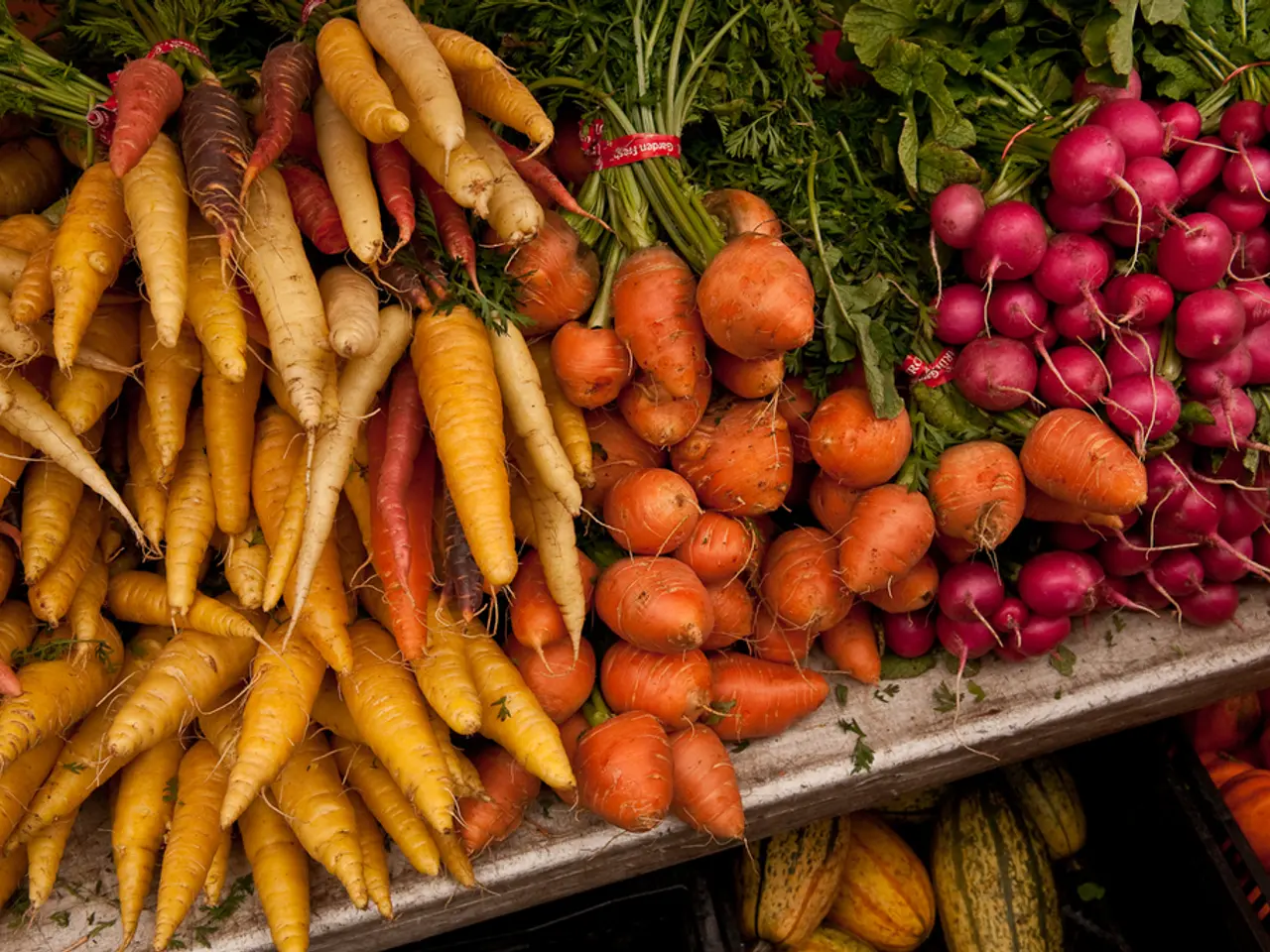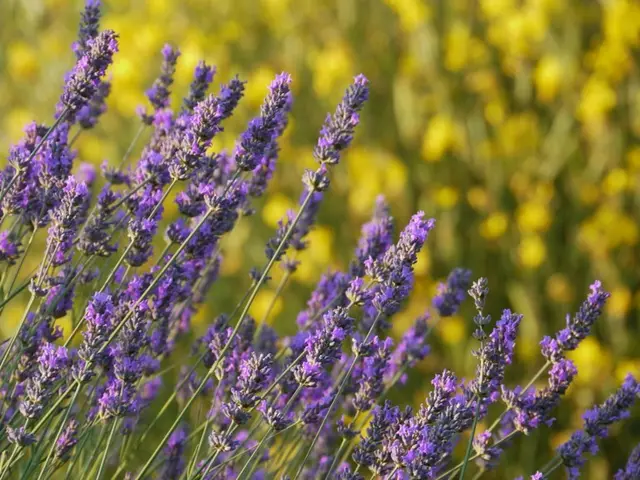Effortless Options for Planting Eight Varieties of Crops
Growing Easy Vegetables from Seeds: A Step-by-Step Guide
Starting your own vegetable garden from seeds can be a rewarding and cost-effective endeavour. Here's a simple guide to help you grow easy-to-grow vegetables like green beans, beets, cucumber, lettuce, tomatoes, pumpkin, zucchini, and radish.
1. Choose the Right Seeds and Varieties
Select seeds known for being easy and suitable for your climate. Self-pollinating vegetables such as beans, lettuce, and tomatoes are good beginner choices. Pick varieties adapted to your region if possible to improve success.
2. Prepare Quality Soil
Use nutrient-rich, well-draining soil or seed-starting mix. Adding organic compost boosts soil fertility and plant health. Raised beds warm faster and drain better, helpful for cooler climates.
3. Sowing Seeds
- Plant seeds at the depth recommended on the seed packet.
- Sow seeds directly outdoors (like beans, beets, radishes, lettuce) or start indoors for heat-loving plants like tomatoes, pumpkin, and zucchini.
- Keep soil moist but not waterlogged.
- For warm-season crops (tomato, cucumber, pumpkin, zucchini), start seeds indoors several weeks before last frost, then transplant after frost risk passes.
4. Watering and Light
Keep seed trays or garden beds consistently moist with gentle watering. Provide plenty of natural light or grow lights if starting seeds indoors. Mulching after sowing helps retain soil moisture and regulate temperature.
5. Regional and Climate Tips
- In cooler/short-season zones, focus on quick-maturing crops like radishes, lettuce, and beets, and consider using floating row covers or raised beds to extend seasons.
- In moderate zones, direct sow many vegetables in August and transplant brassicas started indoors.
- For warm climates, early starting indoors or sequential sowing spaced 1-2 weeks apart supports continuous harvest.
6. Thin and Transplant
Once seedlings emerge and have several leaves, thin to strongest plants and transplant to final spacing outdoors.
7. Additional Tips
- Label seed trays to avoid mix-ups.
- Use seed-starting mix to prevent damping-off disease.
- Save seeds from your best plants for future planting, especially self-pollinating crops like beans and tomatoes.
Beets are quick crops that do not require much work to grow. Radishes can be planted in both the spring and fall season, but should not be planted during warm weather. Zucchinis should not be planted too early because they cannot tolerate cold temperatures. Lettuce seeds can be planted in peat pots a few weeks before the last frost date in your region. Radishes can be planted several times in one growing season. Pumpkins are prone to powdery mildew, so water only the base of the plant. Seeds are more affordable than buying fully-grown plants.
Growing plants from seed is ideal for those looking to hone their gardening skills. Beets are naturally resistant to common garden pests and diseases. Lettuce seeds should be soaked in water before planting for faster germination. Vegetables are the easiest crops to grow from seeds. Tomato seeds can be grown in peat pots, egg cartons, or plastic cups. Tomato seeds should sprout within 1 to 2 weeks of planting. Cucumbers produce flowers that need to be pollinated for the crop to mature. Lettuce is a fast-growing vegetable, but succession sowing is necessary for a steady supply. Green beans are some of the easiest crops to grow, with snap beans or string beans being a favorite. Using a seed starter mix can help tomato seeds grow stronger. Pumpkins require regular watering, especially during the summer season.
1. For beginners interested in home-and-garden activities, growing easy vegetables from seeds like beets, radishes, and lettuce can be a rewarding part of your lifestyle.
2. Additionally, by investing in seeds and expanding your home-and-garden venture to gardening, you can enjoy the cost-effective growth of vegetables such as zucchinis, tomatoes, and pumpkins in your own garden, contributing to a healthier and self-sustainable lifestyle.




